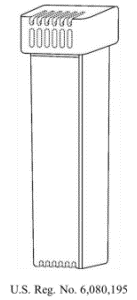The US Court of Appeals for the Sixth Circuit upheld a jury verdict finding a dietary supplement company liable for misappropriating another company’s research and development (R&D) related to broccoli-seed extract. Caudill Seed & Warehouse Co., Inc. v. Jarrow Formulas, Inc., Case No. 21-5354 (6th Cir. Nov. 10, 2022) (per curiam) (Moore, J., concurring in part and dissenting in part). The decision addressed several issues relating to so-called “combination” trade secrets.
Caudill manufactures and sells various nutritional supplements, including a supplement made using broccoli-seed extract. Caudill sued Jarrow Formulas for trade secret misappropriation after its Director of Research Ken Ashurst left Caudill and joined Jarrow. Ashurst had led Caudill’s R&D efforts for nine years, including extensively researching the development of broccoli-seed derivatives and assembling a large body of research related to broccoli seeds. After he joined Jarrow, Ashurst delivered a curated collection of broccoli product research to Jarrow and helped it bring its own competing broccoli-seed extract supplement to the market in just four months.
The case proceeded to trial. The jury found that Caudill had a protectable trade secret; Jarrow misappropriated said trade secret; and Caudill was entitled to more than $2 million in actual losses, more than $400,000 in unjust enrichment damages, and exemplary damages. Jarrow moved for judgment as a matter of law and for a new trial. After the district court denied the motions, Jarrow appealed.
Jarrow argued that Caudill improperly asserted a “kitchen-sink theory” of trade secrets by broadly defining all its research activities as a single trade secret. Jarrow also argued that Caudill failed to show that it had acquired the alleged trade secret. Finally, Jarrow challenged the damages awards on legal grounds. The Sixth Circuit rejected each of Jarrow’s arguments on appeal.
The Sixth Circuit first found that Caudill properly defined its alleged trade secret as its “research and development on supplements, broccoli, and chemical compounds.” The Court treated Caudill’s alleged trade secret as a “combination” trade secret (i.e., a collection of elements that individually are generally known but are unique in combination.) The Court concluded that Caudill demonstrated it had assembled a unique collection of processes and information relating to its R&D process, and therefore, Caudill properly defined its entire R&D process as a trade secret. The Court rejected Jarrow’s argument that Caudill’s alleged trade secret mostly consisted of public domain materials on the basis that the materials were unique in combination.
The Sixth Circuit also rejected Jarrow’s argument that Caudill failed to show that Jarrow acquired and used the entire combination trade secret. The Court noted differing authority on whether a plaintiff alleging a combination trade secret must show acquisition and use of the entire combination but concluded that trade secret law does not require proving acquisition of “each atom” of the combination trade secret. The Court reasoned that when a trade secret consists of a “mass of public information” that has been collected, the defendant will always be able to identify some minute detail of the combination that it did [...]
Continue Reading
read more

 Subscribe
Subscribe




